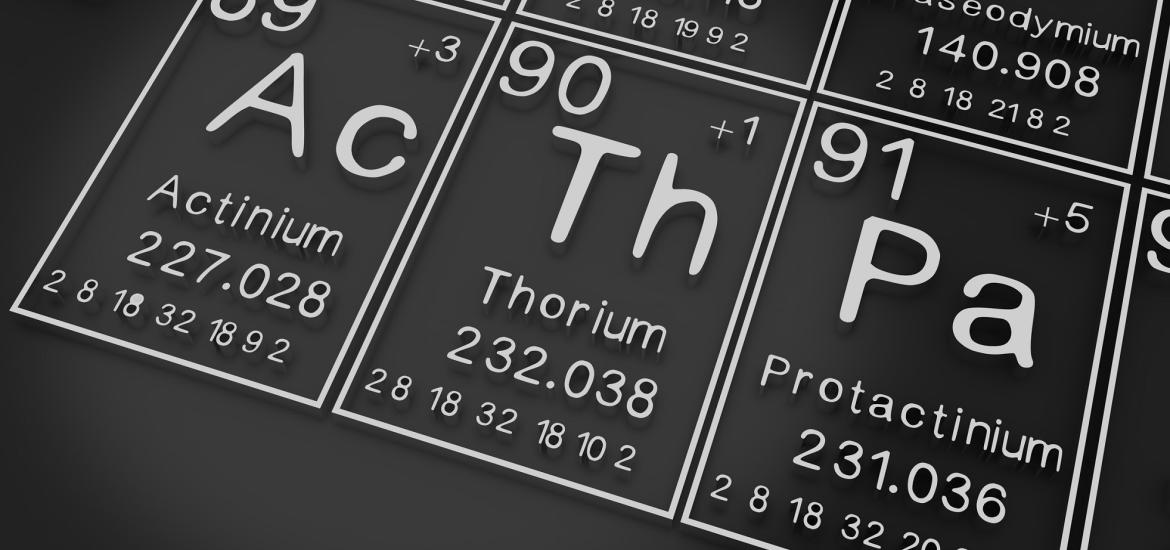
Novartis’s post-Pluvicto plan materialises
The company has two actinium-labelled PSMA radiopharmaceuticals, and one is about to pivotal.
The company has two actinium-labelled PSMA radiopharmaceuticals, and one is about to pivotal.

Novartis has long been a proponent of radiopharmaceuticals, so it makes sense that it’s moving to shore up its PSMA-targeting Pluvicto franchise. And it also fits that the group is looking at projects labelled with actinium-225, the alpha emitter expected by some to be the next big thing in radioligand therapy.
What’s surprising is that Novartis is taking two shots at the actinium goal, with Ac-PSMA-617 and the next-generation Ac-PSMA-R2. The company is about to take the former into a phase 2/3 trial, a recent listing on clinicaltrials.gov reveals. The move sets up a late-stage battle against AstraZeneca, a relatively recent entrant to the radiopharma space.
Alpha vs beta
Pluvicto and other approved radioligand therapies are labelled with the beta-emitter lutetium-177, but alpha emitters like actinium are said to be more potent and precise. This has spurred several alpha emitter-centred deals, including Bristol Myers Squibb’s $4bn swoop for RayzeBio, and AstraZeneca’s $2bn purchase of Fusion.
Novartis itself last year spent $1bn on the preclinical player Mariana Oncology, whose actinium-labelled MC-339 is being developed for small-cell lung cancer.
But the Swiss group’s most advanced alpha efforts are in metastatic castration-resistant prostate cancer (mCRPC), with the aforementioned PSMA assets. In this arena, Pluvicto has the go ahead in patients who have progressed after an androgen receptor pathway inhibitor and taxane-based chemotherapy.
Initially Novartis appears to be targeting the post-Pluvicto setting with Ac-PSMA-617. The upcoming phase 2/3 PSMAction trial, slated to start in April, will enrol PSMA-positive patients who have already received androgen receptor-directed therapy and taxane chemo, and who have progressed on or after 177Lu-PSMA-targeted therapy.
Novartis’s PSMA pipeline
| Project | Description | Status |
|---|---|---|
| Pluvicto | Β-emitting PSMA RLT | Approved for post-taxane PSMA+ve CRPC; filed for pre-taxane CRPC, with approval decision due H1 2025 (PSMAfore trial) |
| Ac-PSMA-617 | 1st-gen α-emitting PSMA RLT | Ph2/3 PSMAction in PSMA+ve post-Pluvicto CRPC to start Apr 2025 |
| Ac-PSMA-R2 | 2nd-gen α-emitting PSMA RLT | Ph1/2 Satisfaction in PSMA+ve 2nd-line CRPC (with & without prior Pluvicto) |
CRPC=castration-resistant prostate cancer; RLT=radioligand therapy. Source: OncologyPipeline & clinicaltrials.gov.
When asked about actinium-based projects during the recent JP Morgan healthcare conference, Novartis’s chief executive, Vas Narasimhan, noted that the company was still learning about the right dosing frequency and the right tumours to target.
Notably, the upcoming phase 2/3 study initially aims to collect more information on the proposed dose of Ac-PSMA-617, before launching into a phase 3 portion that will primarily measure radiographic progression-free and overall survival.
In a pooled analysis of early Ac-PSMA-617 trials, 66% of 201 patients achieved a PSA50 response. The most common side effect was xerostomia (dry mouth), while anaemia was also seen.
Further back in development is Ac-PSMA-R2, which is in the phase 1/2 Satisfaction trial in patients both with and without prior Pluvicto therapy. Results are expected in 2026, according to Novartis’s JP Morgan presentation.
Meanwhile, AstraZeneca’s Fusion-originated FPI-2265 is set to go into the phase 3 portion of its phase 2/3 AlphaBreak trial this year. Lilly has an actinium-based PSMA project, the Point-originated PNT2001, in phase 1, while Bayer and Convergent are also active here, according to OncologyPipeline.
Pluvicto expansion
While Novartis has its eye on the future, Pluvicto is still growing. Despite being dogged by supply issues the drug made $980m in 2023, and 2024 sales are expected to hit $1.5bn.
The next big inflection point could be approval in pre-taxane mCRPC, based on the PSMAfore study. Filing was delayed by a wait for more overall survival data, but an approval decision is now expected in the first half of this year.
Novartis believes that annual Pluvicto sales could exceed $5bn. As for the broader radioconjugate space, Narasimhan reckons that alpha and beta emitters will ultimately both be used, depending on the tumour and patient type.
2832













